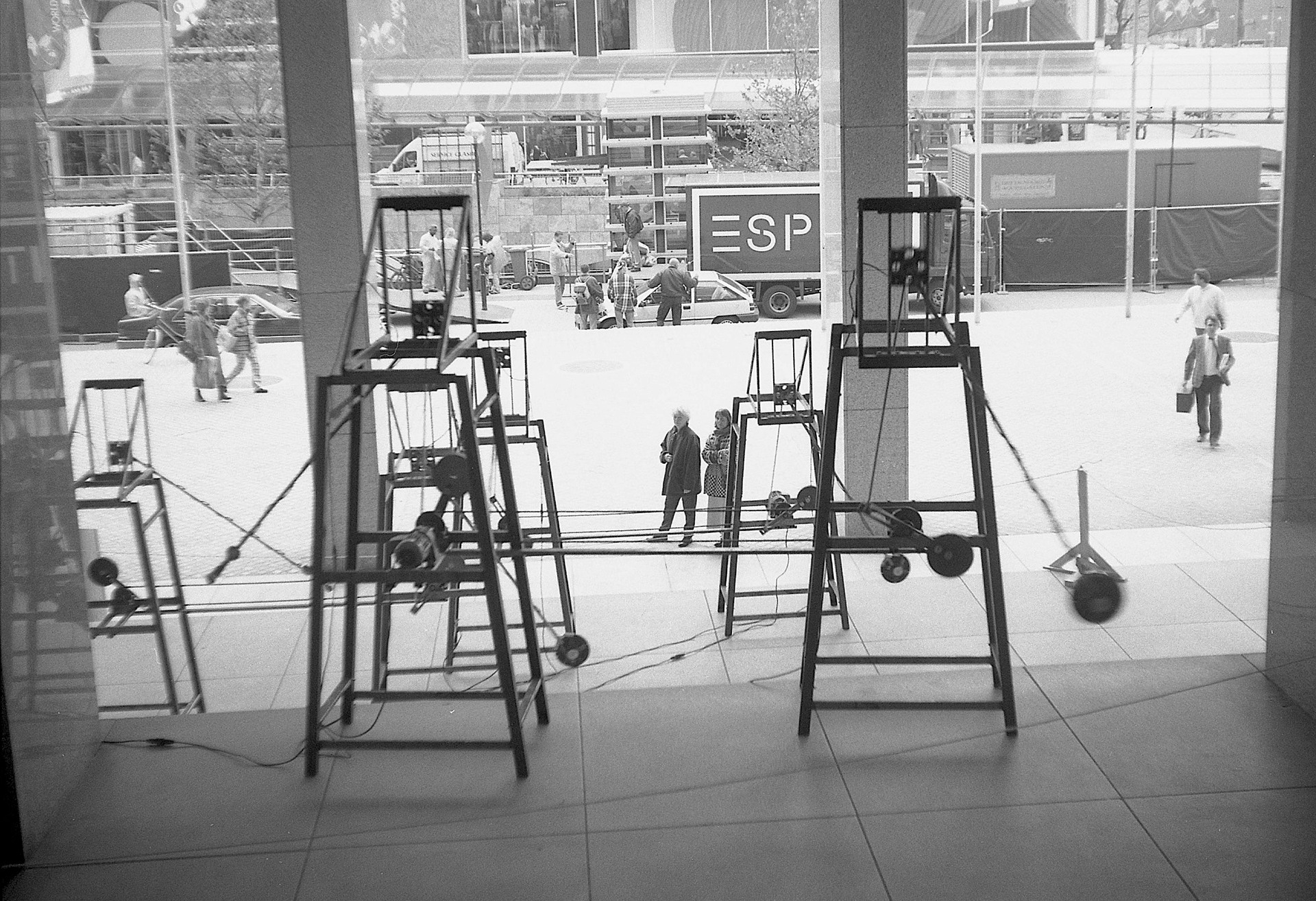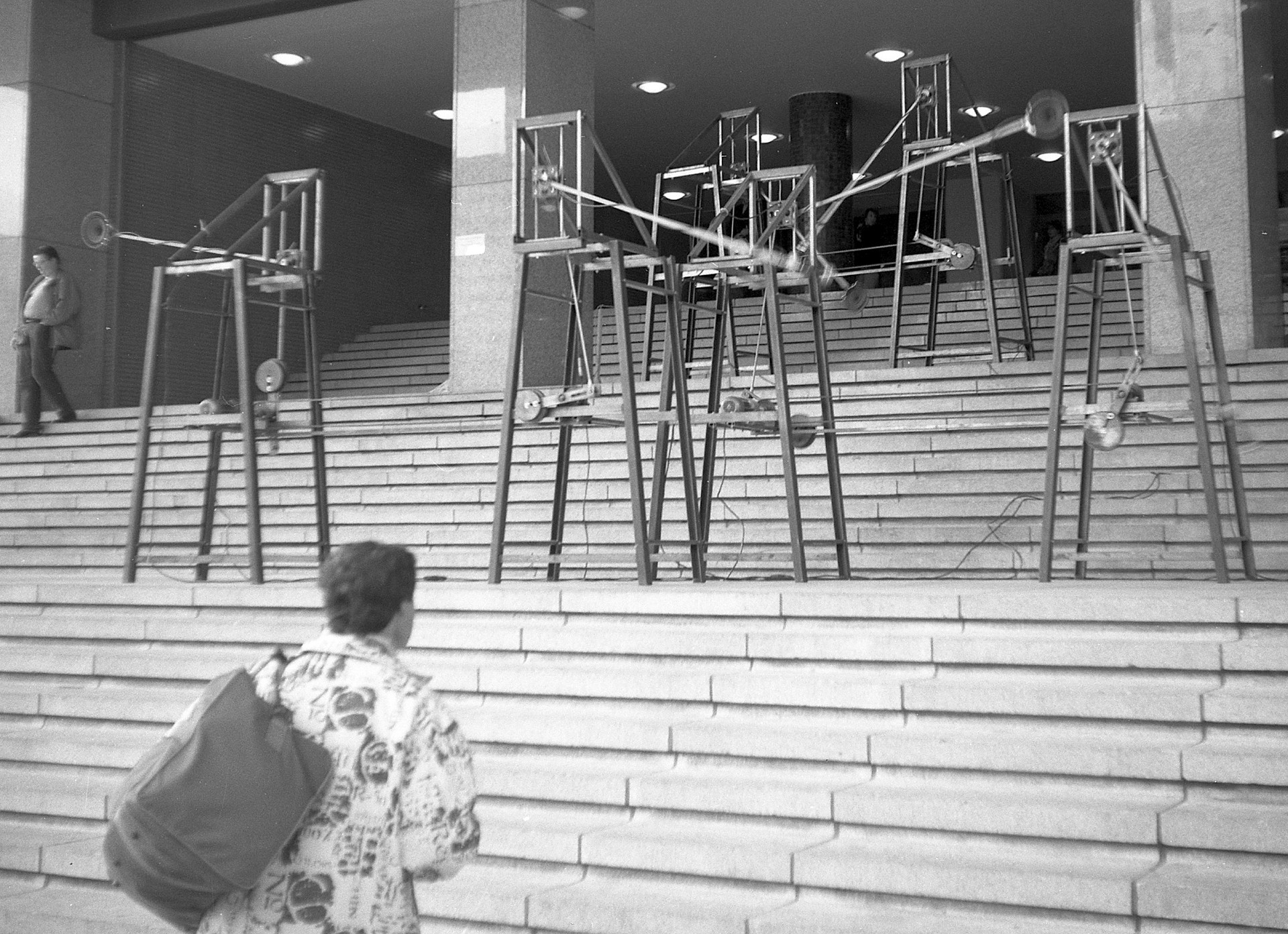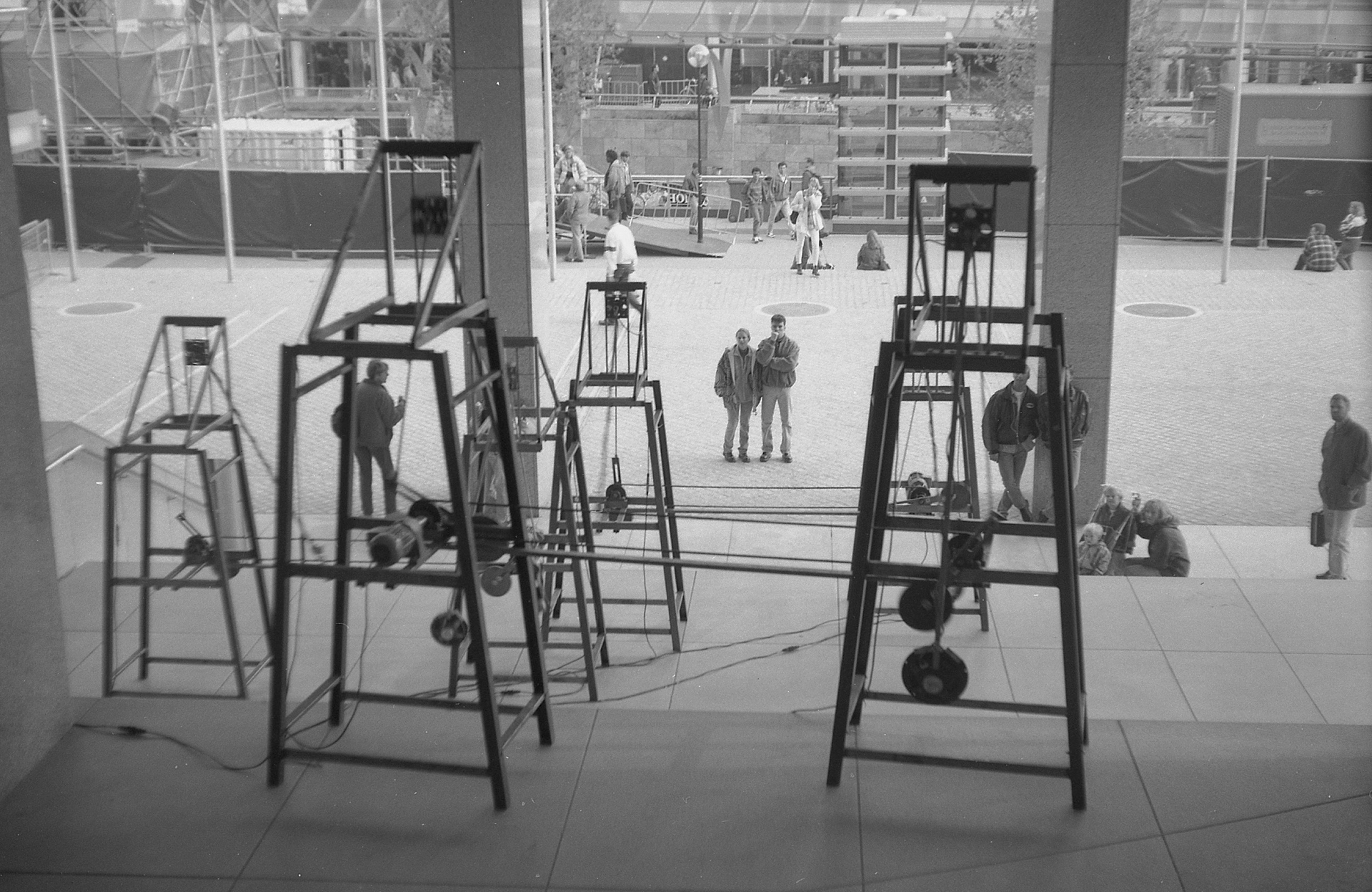“The Electric Swaying Orchestra” by Peter Bosch, Simone Simons
Title:
Artist(s) and People Involved:
Exhibiting Artist(s):
Symposium:
Venue(s):
Creation Year:
Size:
Artist Statement:
The parametrically forced pendulum is a well-known subject that has been thoroughly researched and documented by physicists within the cadre of order and chaos theories. Parametrically forced pendulums are activated by the up and down movement of their hanging mounts. Since the behavior of these pendulums depends on the oscillating frequency of these mounts, the use of a vari-speed electromotor is essential. As a consequence, the pendulums command an exceptionally wide range of movement; what can start off as a traditional to and fro swing can become an unpredictable and irregular motion leading to a startlingly vigorous full circumrotation.
The Electric Swaying Orchestra as shown at ISEA’96 consists of six of such pendulums, each with a length of 1.50 meters. A microphone or loudspeaker is attached to the end of each pendulum. A computer controls the electro-motors and the musical process. However it does not have precise control over the consequences of its decisions. Although the movements of the pendulums are related to the oscillating frequency of their hanging mounts, at a certain point the behavior of the pendulums becomes unpredictable and thus the musical outcome is unpredictable as well. The computer interprets the sounds received from the three swaying microphones and responds by playing new notes over the three swaying speakers. The main factors determining this live composed music are the unpredictable movement of the pendulums and the composition rules executed by the computer. It is a process which repeats itself endlessly; the computer is in fact constantly listening and responding to itself. Since 1995, we have been developing a new installation that furthers the concept of the Electric Swaying Orchestra: A machine that is capable of complex, chaotic behavior and which produces music that is related to this behavior.
While the relationship between movements and sound becomes more sophisticated, it also becomes more apparent. The direction of movement and exact position of each pendulum will be measured as variables for the musical outcome, permitting greater control over the relationship between the movements of the pendulums and the music produced. Each pendulum might be assigned a specific parameter of one tutti live algorithmic improvisation density, pitch, dynamics, for example, or each pendulum could have its own independent musical world. All pendulums are equipped with a loudspeaker – microphones are no longer needed – and they are much longer, two to three meters, providing larger movements and thus resulting in more interesting spatial sound effects. This work is planned for completion during the course of 1996.
Website:
Video:
tART Festival, Universiteit Twente, Enschede, Netherlands, 1991







